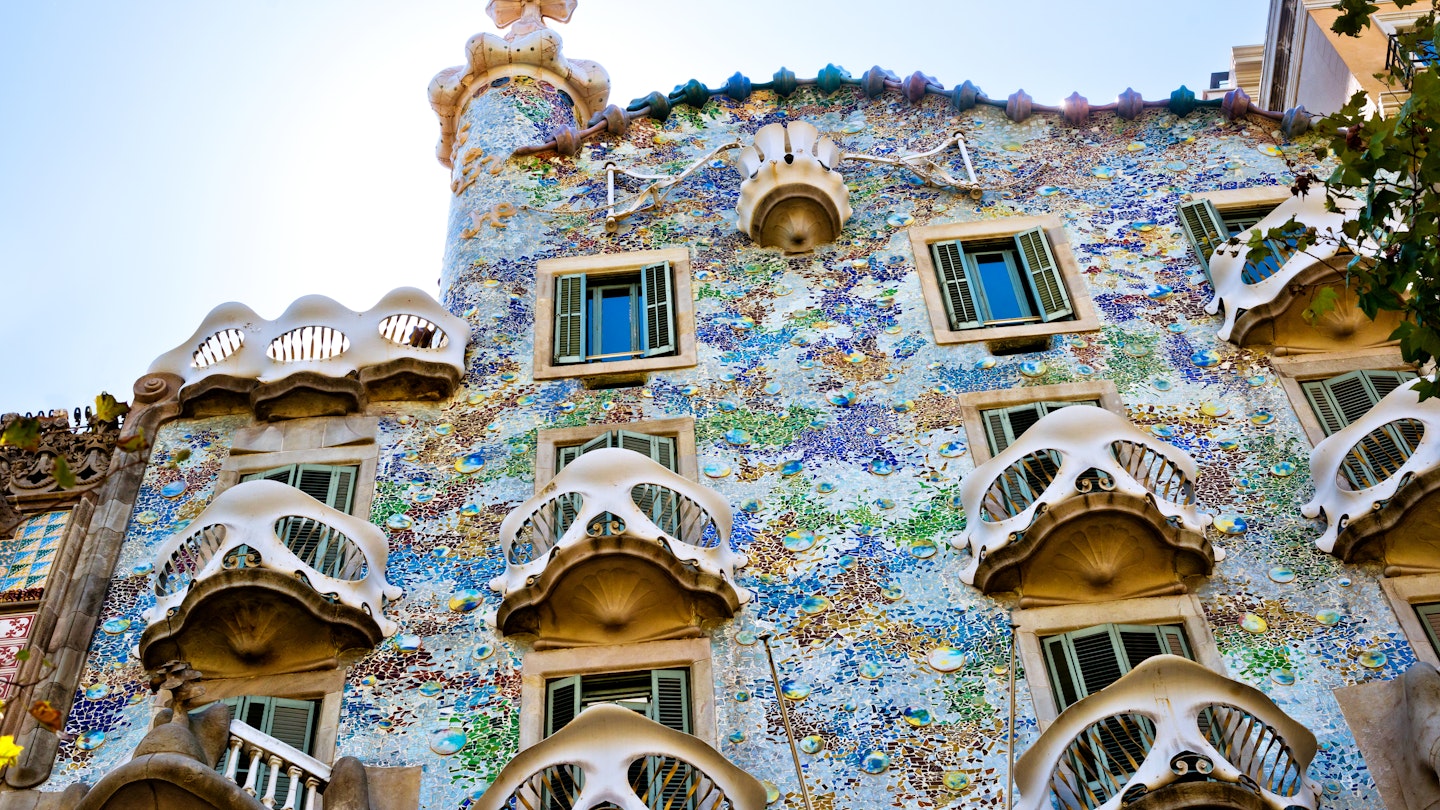Explore Barcelona’s Architectural Wonders
Famed for its architectural treasures, Barcelona is dotted with striking Gothic cathedrals, fantastical Modernisme creations, and avant-garde works.
Building first boomed in the late Middle Ages when Barcelona was the seat of the Catalan empire. In the late 19th century, the city broke its medieval confines and underwent a transformation through the whimsical architectural movement called Modernisme (Catalan modernism). The third notable era of design began in the late 1980s and continues today.
Barcelona’s architectural gift to the world is Modernisme, a flamboyant Catalan creation that erupted in the late 19th century, personified by the visionary work of Antoni Gaudí, a giant in the world of architecture. Imaginative creations by Gaudí and his contemporaries have filled Barcelona with dozens of masterpieces.
La Sagrada Família

If you have time for only one sightseeing outing in Barcelona, La Sagrada Família should be it. Gaudí’s unparalleled, Unesco-listed La Sagrada Família inspires awe by its sheer verticality, and like the medieval cathedrals it emulates, it is still under construction. Work began in 1882 and is hoped (perhaps optimistically) to be completed in 2026, a century after the architect’s death. Unfinished it might be, but the cathedral attracts more than 4.5 million visitors a year and is the most visited monument in Spain.
Basílica de Santa Maria del Mar

At the southwestern end of Passeig del Born stands Barcelona’s finest Catalan Gothic church, Santa Maria del Mar (Our Lady of the Sea). Begun in 1329 under the watch of architects Berenguer de Montagut and Ramon Despuig, the church is remarkable for its architectural harmony and simplicity. Famously, the parishioners themselves contributed their time to help construct the church, particularly the stevedores (longshoremen) from the nearby port.
Torre Glòries

Barcelona’s famously cucumber-shaped tower, Jean Nouvel’s luminous Torre Glòries, is among the most daring additions to the city’s skyline since the first towers of La Sagrada Família were erected. Opened in 2005, the 38-story structure shimmers at night in shades of midnight blue and lipstick red. The interior is closed to visitors and houses offices.
Palau de la Música Catalana

A symphony in tile, brick, sculpted stone and stained glass, the Unesco-listed, 2146-seat Palau de la Música Catalana concert hall is a highlight of Barcelona’s Modernisme architecture. Built between 1905 and 1908 by Domènech i Montaner with the help of some of the best Catalan artisans of the time, it was conceived as a temple for the Catalan Renaixença (Renaissance). The showstopper is the richly colorful auditorium, with its ceiling of blue-and-gold stained glass and a shimmering skylight.
Recinte Modernista de Sant Pau

Domènech i Montaner outdid himself as architect and philanthropist with the Modernisme Hospital de la Santa Creu i de Sant Pau, which was renamed Recinte Modernista in 2014. Built between 1902 and 1930, it was long considered one of Barcelona’s most important hospitals but was transformed into cultural centers, offices, and a monument in 2009. This joint Unesco World Heritage Site, along with the Palau de la Música Catalana, consists of a 27-building complex that is lavishly decorated, with each of its 16 pavilions being unique.
Mercat de Santa Caterina

Come shopping for your tomatoes or pop in for lunch at Mercat de Santa Caterina, an extraordinary-looking produce market designed by forward-thinking architects Enric Miralles and Benedetta Tagliabue to replace its 19th-century predecessor. Completed in 2005, it is distinguished by its undulating, kaleidoscopic roof, suspended above bustling produce stands, restaurants, cafes, and bars. The multicolored ceramic roof recalls the Modernisme tradition of trencadís decoration.
La Pedrera

In the top tier of Gaudí’s achievements, the madcap La Pedrera is a Unesco-listed masterpiece. Built between 1905–10 as a combined apartment and office block, it is better known as La Pedrera (the Quarry) because of its uneven gray stone facade, which ripples around the corner of Carrer de Provença. Gaudí’s approach to space and light, as well as the blurring of the dividing line between decoration and functionality, are astounding.
Casa Amatller

One of Puig i Cadafalch’s most striking flights of Modernisme fantasy, Casa Amatller combines Gothic window frames and Romanesque flourishes with a stepped gable borrowed from Dutch urban architecture. The beautifully tiled pillared foyer and staircase lit by stained glass feel like the interior of some romantic castle. The building was renovated in 1900 for chocolate baron and philanthropist Antoni Amatller (1851–1910).
Casa Batlló

One of Europe’s strangest residential buildings, Casa Batlló is Gaudí at his fantastical best. From its playful façade and marine-world inspiration to its revolutionary experiments in light and architectural form, this apartment block stands as one of the most beautiful buildings in a city where architectural stakes soar sky-high. When Gaudí was commissioned to refashion this building, he went to town inside and out, creating an immersive architectural experience.
Pavelló Mies van der Rohe
Designed in glass, steel, and various marbles in 1929 by Ludwig Mies van der Rohe for the World Exhibition, the curious Pavelló Mies van der Rohe is emblematic of the Modernisme movement and has inspired several generations of architects. It was removed after the exhibition and reconstructed only in the 1980s, being consistently referred to as one of the key works of modern architecture.




